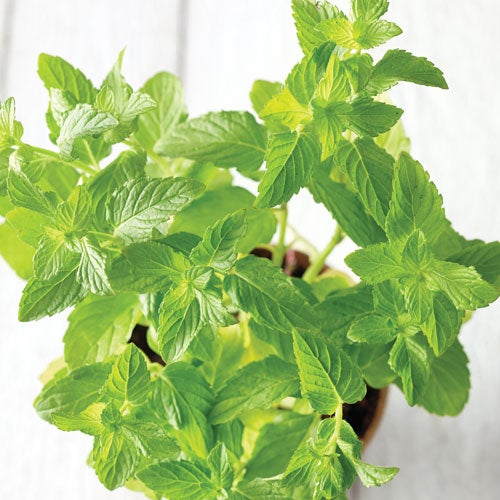Your Guide to Mint

mint
Discover the top 50 Farmers’ Markets in America!
More than just a garnish for desserts, fresh mint is traditionally added to savory dishes in Middle Eastern, Indian and Italian cuisines. The two most common varieties are spearmint, which is mild and ideal for cooking, and peppermint, which has a sharper flavor and makes excellent tummy-soothing tea. When growing mint, always give it its own container as it can push other herbs around when it’s planted in close proximity to them.
Peak Season: Late spring to early summer
How to select: Look for bright green, fragrant leaves that aren’t wilted or blemished.
Price range: $1 to $3 per small bunch
Keep it fresh: Discard any plastic cartons or fasteners, trim stem ends and loosely wrap mint in a damp paper towel. Seal in a zip-top bag and refrigerate 2 to 4 days. Wash and dry just before using.
Pairs well with: Potatoes, peas, strawberries, rhubarb, lamb, tomatoes, dark chocolate
Creative uses: Replace the basil in any pesto recipe with mint (or use it to garnish pasta dishes that call for basil). Mix with buttery steamed potatoes or sweet green peas.
Nutrition highlights: Mint supplies rosmarinic acid, an antioxidant that neutralizes free radicals and inhibits the production of inflammatory chemicals like leukotrienes.
Mint Recipes
Cool Minted Pea Soup & Citrus Shrimp with Garlic Pita
Lime Pomegranate Chicken Breasts with Herbed Farro
Fettuccine with Mint Pesto, Figs & Feta
Irish Mint Patties
Fettuccine with Mint Pesto, Figs & Feta